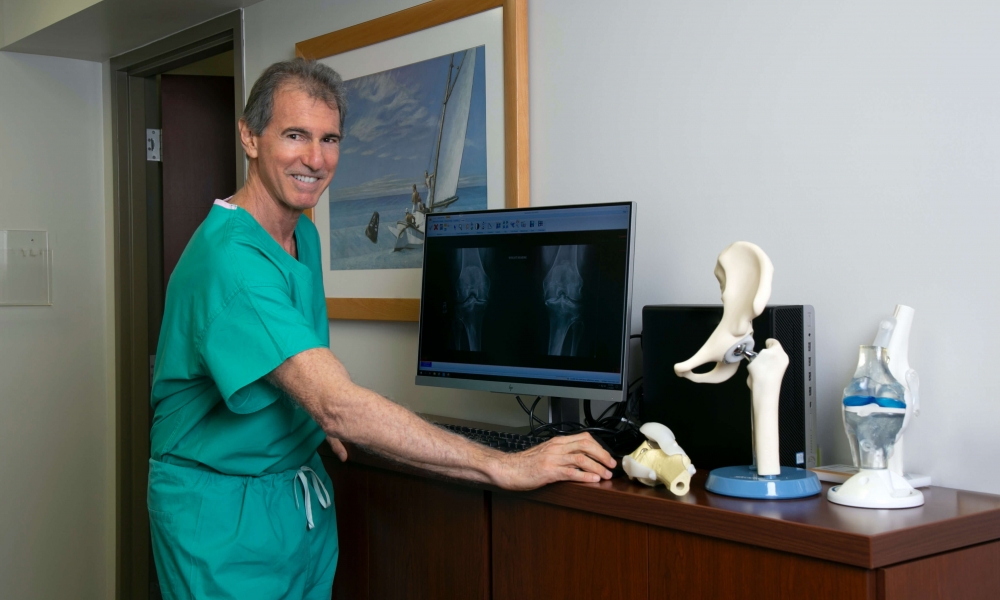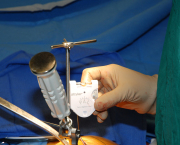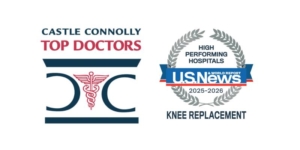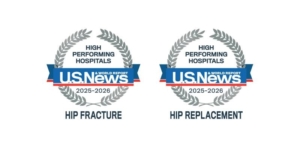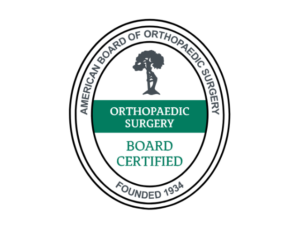Steps You Can Take to Ensure the Best Result and Best Experience when Having a Hip or Knee Replacement
In a previous blog, “Why Joint Replacement Patients Are Getting Well so much Faster Today,” I described the reasons why patients are getting well so much faster today than even just a few years ago. This partially is due to new and improved surgical techniques and prosthetics, as well as better pain management and prevention strategies. In this article, I will continue that discussion citing what each patient can do pre-operatively and post-surgically to ensure the most-optimum outcome and best experience. A wealth of information can be found in this blog, as well as the prior blog and on The Leone Center for Orthopedic Care website, where there are informational booklets about how to optimize your surgical result and experience.
Along with the many health-conscious steps a patient can take – such as pre-op exercises, weight loss, stopping smoking several weeks or more prior to surgery and optimizing or resolving medical conditions such as blood pressure, diabetes and even routine dental cleaning – I will outline the importance of getting pre-op medical clearance and having a full plan in place prior to surgery.
Have your pre-op clearance completed early
A large part of a smooth post-operative recovery begins with a thorough pre-operative evaluation and developing an after-discharge plan. Identifying and then managing or resolving any condition before surgery that adds potential risk or complexity will greatly improve your safety. Blood and urine studies, an EKG and a chest X-ray typically are required within 30 days of surgery. An on-going frustration for both patients and surgeons is getting the results of these completed studies to the treating surgeon’s office in a timely manner. It is emotionally distressing for any patient, as well as the family, when surgery must be cancelled and rescheduled for a later date because paperwork is not completed. The thought of having surgery is anxiety producing enough without this added burden. This also is very disruptive to your surgeon’s practice and his or her ability to provide you with the surgical day and time that best fits your needs. Sadly, it is all too common. By staying on top of the process, you can help prevent this.
It never hurts to follow-up often with the physician or the physician’s staff that is clearing you for surgery to make sure the paperwork is completed and sent to the surgeon. If surgery is delayed past the 30-day window, labs may need to be repeated.
Learn all you can about all aspects of your upcoming surgery
Our experience, which mirrors multiple studies in medical literature, repeatedly shows that patients who go into surgery better educated and prepared not only have a better experience but also get well faster. Knowing what to expect and having a plan for care after surgery is critically important. Do your research and ask questions, get to know the surgeon and his or her team who will be directing your care, and go to the pre-op conferences/talks that many hospitals host.
Develop a plan for after you are discharged from the hospital
Most people are happier and get well faster when they go home after surgery. Further, your home often is the safest place to rehabilitate after surgery. For many of our patients, we arrange for a home physical therapist and a home health aide and/or nurse to smooth the transition from the hospital to home.
For some patients, particularly after total knee replacement surgery, continuing or even beginning therapy at an outpatient facility is more appropriate. Because the plan may change after surgery, it is best to have an outpatient or inpatient rehab facility lined up just in case.
Identify a support person
Choose a family member or friend who can attend your last hospital therapy session, will be there for your discharge instructions from the nurse and doctor and, hopefully can help you at home with basic support and care. I realize this is not always possible, but having a friend or family member to help you at home will make you feel more comfortable and secure.
Discharge to another facility
For some patients, discharge to an in-patient rehab facility is most appropriate because of medical, emotional or even social reasons. Most insurance companies have contracts with specific rehabilitative centers. Inpatient rehabilitative facilities are designated level I or level II rehabs, depending on the level of care provided. Total joint replacement patients who are discharged to rehab facilities most often go to Supervised Nursing Facilities (SNF), which are considered level II rehabs. The final decision, even if accepted by the rehab facility and the rehab facility is approved by the insurance carrier, is most-often made by the patient’s insurance company. This can be frustrating for the patient, their family, your surgeon and the hospital. It is best to find out from your insurance carrier or the hospital what facilities are available and then visit them prior to surgery. If the facility appears clean, if patients there look happy and you get a good feeling when you visit a center, that’s a very good start.
Bundling Episodes of Care
Traditionally, Medicare has made separate payments to providers for each of the individual services furnished to beneficiaries for a single illness or course of treatment. This traditional approach often resulted in less-than-optimally efficient and fragmented care with minimal coordination across providers and healthcare facilities. New models of bundled payments are being rolled out in order to save money and align incentives (money, better outcomes, less complications, less waste) for providers (doctors, hospitals, post-acute care providers and other practitioners) by encouraging them to work more closely together across all specialties and settings.
The Bundled Payments for Care Improvement (BPCI) initiative was developed by the Center for Medicare and Medicaid Services (CMS), a Federal agency that manages the Medicare and Medicaid insurance programs. Currently, bundle payment programs are being rolled out only in some high-volume areas and hospitals around the country.
Holy Cross Hospital now participates in phase two of the program, which provides a flat fee for the entire episode of care (i.e., an individual patient’s total hip or total knee replacement), beginning from the day of admission and extending for 90 days. This bundle payment includes everything from prostheses, radiology, pathology, pharmacy, operating room charges, post-discharge physical therapy, rehab facilities and much more, as well as the physician or physician extenders (PA, CNP, CRNA) charges, including surgeon’s and assistants’ fees, during this period. In addition, this bundle also includes any anticipated charges accrued, including returned trips to the OR, transfers to the ICU, readmission during first 90 days, or even urinary tract infections and pneumonia.
Since rehab unit charges also are subtracted from the bundle, hospitals are aligning with specific rehab facilities that are sensitive to payment limitations and still eager for the business. Many experts expect that this bundle payment model will become the future norm as more insurance carriers adopt it. As this trend progresses, it will be increasingly important that the insurance company goals become more aligned with all the other participants; the goal for the insurance companies just can’t be to save/make more money, but to encourage better care with less complications for patients. And, insurance companies and facilities must be held accountable.
Because of this, hospitals and providers are investing tremendous effort in improving alliances for better care. I believe that in the long run this will be very beneficial. Aligning all of the involved care providers in a more coordinated and efficient way ultimately will result in a better patient outcome, better patient experience, less waste and less complications. We all must be hypervigilant that sicker, higher-risk patients or more complex-care patients are not prevented from obtaining care under this payment model. Everyone must have access to care and care providers and hospitals must not be penalized for taking care of these higher-risk patients.
Hospitals now are more motivated than ever to improve care and prevent complications. It subsequently facilitates cooperation and aligns resources and providers to deliver better care. It behooves every patient, especially those being cared for under this bundle model, to make sure that he or she has taken all of the steps I have outlined above to improve the chances for a better result, quicker recovery and better experience. Also important, this will lessen the chance of your surgery being delayed or canceled.
As always, at The Leone Center for Orthopedic Care, our goal is to restore the quality of life for our patients whether in their 20s or 90s. With today’s advances in joint replacement surgery, it is not just about being able to walk, being independent and living pain-free, for many it is about getting back to activities they love, such as dancing, golfing, gardening, tennis, swimming and much more.
We thank you for your readership. If you would like a personal consultation, please contact our office at 954-489-4575 or by email at LeoneCenter@Holy-cross.com.

